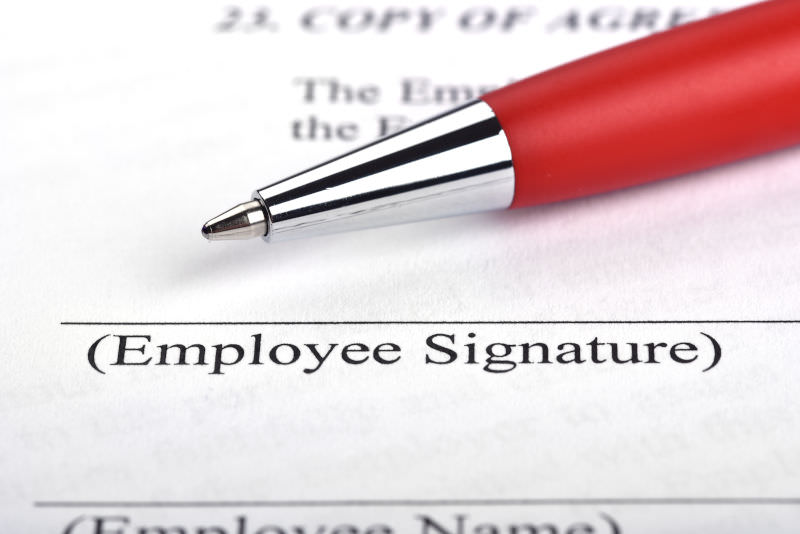Two recent developments have signalled steps towards greater degrees of workplace gender equality. They are: gender pay gap reporting and discrimination in dress codes. Whilst you may be unlikely to see differences from them in the short-term, both developments highlight important issues and may, in time, bring significant changes to the enforcement of equality in the workplace.
Gender pay gap reporting
Large businesses will soon be required to report upon the existence of any pay gaps between their male and female workers.
In April, the Equality Act 2010 (Gender Pay Gap Information) Regulations 2017 are set to come into force. These regulations mean that employers with 250 or more employees must collect various pieces of data, such as average hourly pay, in order to establish whether any pay gap exists in their organisation.
Once this data has been collected, employers must then publish an annual report of their findings on the business’s website. The first of these reports will be due in April 2018.
What is the ‘gender pay gap’?
Firstly, it is different from equal pay. With equal pay rights, a man and a woman performing the same or similar roles are entitled to receive the same wage. The pay gap regulations aim instead to examine the average amounts men and women receive. Reports must include data on the difference between:
- the average hourly pay of male and female employees
- the average bonus male and female employees receive
- the proportions of male and female employees who receive bonuses
Information must also be included on the proportions of male and female employees in each of four earning brackets within the organisation in question. In other words, the report must reveal the proportion of men and women in the business’s top 25% of earners, then the next 25%, and so on.
The potential benefits of this are neatly expressed on the Acas website: “What gets measured gets managed and what gets published gets managed even better.”
How could this affect me?
At present, the regulations will have little impact on employees. They are certainly worth bearing in mind, however, especially when the first reports fall due to be published next year.
If you work for a large employer, they will soon have to start compiling this data. It is possible that doing so will lead some employers to conclude they have to implement some changes before the publication deadline.
Dress code discrimination
The second development comes from the release of a report by the Petitions Committee and the Women and Equalities Committee entitled ‘High heels and workplace dress codes.’
The report calls for the Government to take action to prevent discrimination through dress code policies; in particular, policies which impose greater requirements upon one sex in comparison to the other.
The Committee’s inquiry arose from a petition started by Nicola Thorp, which requested it be made illegal for workplace dress codes to require female employees to wear high heels. Ms Thorp had been employed by an agency as a receptionist. When one day she refused to wear high heels, the agency had sent her home without pay. Their dress code at the time, specified that female employees should wear shoes with a heel height “normally a minimum of 2 inches and maximum of 4 inches, unless otherwise agreed by the Company.” Outraged at her treatment, Ms Thorp launched her petition.
The law relating to discrimination
Discriminating against someone on the grounds of their sex is illegal under the Equality Act 2010. In most cases however, the more difficult issue to determine is whether the behaviour in question constitutes discrimination under the law.
The Act recognises two broad categories of discrimination:
- Direct discrimination – Where person A treats person B less favourably than others because of one of B’s characteristics.
- Indirect discrimination – Where person A implements a policy or practice which, although applying to all, results in person B being treated less favourably because of one of B’s characteristics. For example, a height requirement might indirectly discriminate on the grounds of sex because women tend to be shorter than men. Even though some women would meet the requirement and some men would not, it can still amount to discrimination as women would be at a disadvantage statistically.
In both direct and indirect discrimination, A will only commit an offence if B’s characteristic is one ‘protected’ under the Equality Act. These protected characteristics are:
- Age
- Disability
- Gender reassignment
- Marriage and civil partnership
- Race
- Religion or belief
- Sex
- Sexual orientation
However, this only represents the basic position; there are numerous special cases mentioned in the Equality Act. Also, instances of indirect discrimination can be justified if they are “a proportionate means of achieving a legitimate aim”, i.e. there is good justification for the practice or policy and it doesn’t go ‘over the top’ to achieve it.
Is it illegal to require high heels to be worn?
Whilst it is not expressly illegal for a dress code to require women to wear high heels, the Government’s response to the Committee stated that, in Ms Thorp’s case, the requirement to wear high heels would amount to direct discrimination against women. This was on the basis that the code imposed stricter requirements on women than men and, as such, it treated women less favourably.
The Committee’s views
The Committee found that “requirements to wear high heels are widespread” and “in certain sectors, breaches of the law are commonplace”. It criticised the Government’s approach of expecting employers to find out their obligations and comply with them.
The Committee made several recommendations including: for Employment Tribunals to be given more effective remedies against employers who breach the law in respect of discriminatory dress codes; and for campaigns to promote guidance and awareness of the issue amongst employers, workers and students.
The issue has attracted a great deal of publicity and the Committee’s inquiry included an in-depth examination of the health risks associated with extensive use of high heels. With these points in mind, it would be surprising if the Government did not take further action in relation to the Committee’s recommendations.
How Truth Legal can help
If you believe you have been the victim of discrimination, whether in relation to a dress code, wages, or any other respect, it is important to seek specialist legal advice if you wish to take action.
My name is Navya Shekhar, head of Employment Law at Truth Legal. I have experience of over 10 years in dealing with Employment Law issues. Our firm has the expertise to fully advise you on any legal matters you may have. If you would like to discuss any of the issues raised in this article, please feel free to get in touch and tell me about your situation at navyas@truthlegal.com.
Our head office is in Harrogate but Truth Legal also has virtual offices in Manchester and London. We are more than willing to sit down with you for a free, no-obligation consultation and to discuss any ways in which we can help you.
You can get in touch either by telephone on 01423 788 538 or by emailing us at enquiries@truthlegal.com.
Further Reading
From one of the UK’s most read legal blogs.











